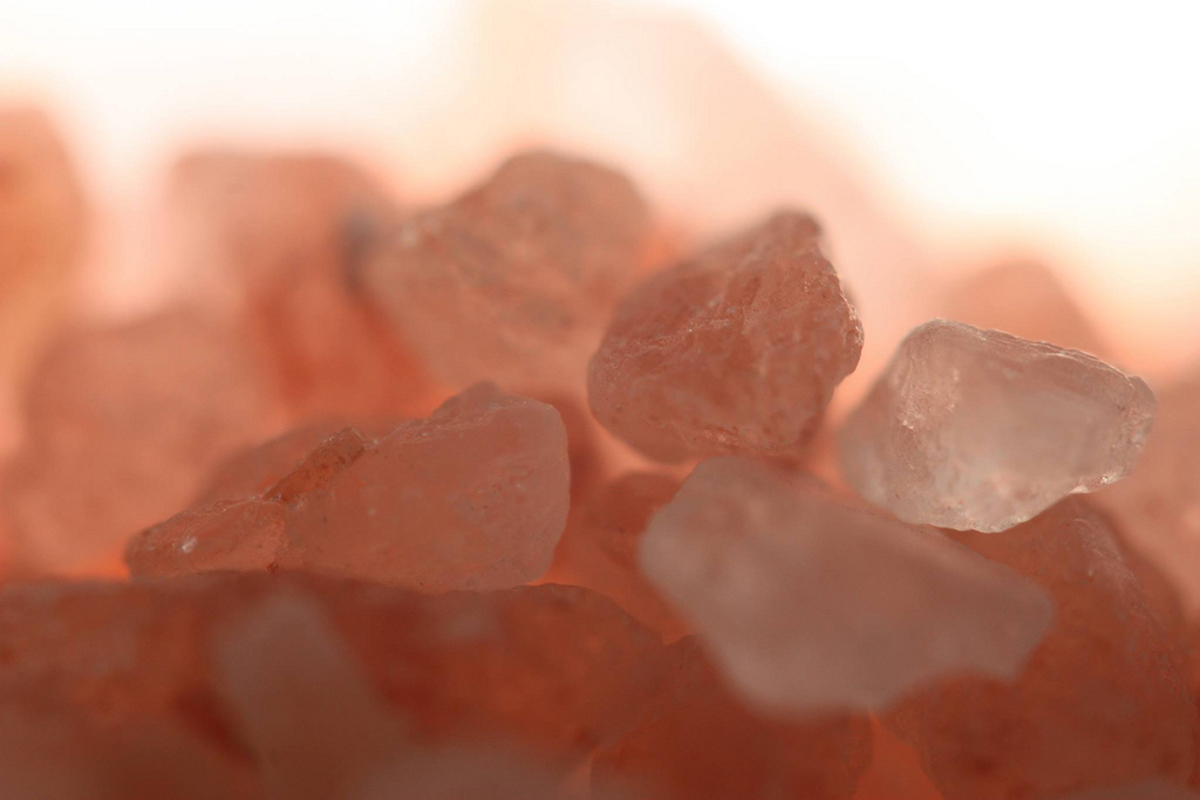Himalayan pink salt seems to be all the rage now — I even encountered (very expensive) packages of the coarse stuff in a regular supermarket the other day — but back when I first came across it, it still very much belonged to the obscure realm of "crunchy granola" hippy types.

I like granola as much as the next vegetarian, chicken-keeping, tai-chi practicing gal, so it's no surprise that I knew people who had numerous Himalayan salt lamps in their incense-infused home. Just having the lamps in your house, they told me, would rid your air of allergens and chemicals, and offer you positive energy. Smash a lamp, the lady of the house mentioned, and you could make salt: salt that contains a lot less sodium and a lot more minerals than regular table salt. I didn't like the thought of smashing a lamp up to make salt, but I did buy some Himalayan salt the next time I came across it at my local health food shop.
What Exactly Is Himalayan Salt?
Himalayan salt is rock salt mined in the Khewra Salt Mine in the Punjab region of Pakistan. It comes from caves that formed around 250 million years back, when ocean salt poured in and settled down there. Mined by hand, Himalayan salt is usually sold in very coarse or slightly finer granules. That, combined with its distinctive pink hue, makes it look pretty cool.
What about the makeup of Himalayan salt? About 95 to 96 percent sodium chloride, actually, as well as about two to three percent polyhalite — which is, according to Wikipedia, a "hydrated sulfate of potassium, calcium and magnesium". The rest consists of traces of ten different minerals. Iron oxide gives Himalayan salt its pink color.
What Do People Do With Himalayan Salt?
They put it on their food. Humans, like many other animals, love salt, and sodium is indeed essential — our brains and nerves wouldn't work without it. Still, we all know too much sodium isn't good. Himalayan food is said to contain less sodium and more minerals, so people who put the pink stuff on their food think they are doing their health a lot of favors.
They also increasingly often stick it in "salt rooms", which serve to mimic the mine the salt comes from, and which is — proponents say — home to some of the happiest and healthiest miners on Earth. A salt room session is meant to be good for your skin and airways, as well as relaxing. Those salt room sessions, which last about 45 minutes, can be pricey. If you want to do something similar for less money, add some Himalayan salt to your bath, close the door, and enjoy.
READ The Healing Benefits Of Sea Salt
Once, I even bought a package for a friend's dog, who had skin problems. Bathing the dog in Himalayan salt was meant to cure those.
Does Himalayan Salt Live Up To Its Health-Nut Reputation?
Is Himalayan salt as good as those who love it say it is? If you have asked yourself this question, you are not alone.
Do You Need The Minerals In Himalayan Salt?
A prime reason your crunchy friends recommend you buy Himalayan salt is the idea that it contains tons of minerals that your body needs to stay healthy. Some people even go so far as to say that Himalayan salt contains 84 minerals, but some — like oxygen — aren't technically minerals at all.

It is true that Himalayan pink salt contains phosphorus, bromine, boron, and zinc, among other minerals, but these elements are present only in minuscule amounts that aren't going to make much of a difference to your health. Not that that matters, because you will be getting these minerals anyway if you make sure you eat a healthy and balanced diet. Himalayan salt also contains some minerals that are downright toxic in large amounts — "pass the plutonium and lead" doesn't sound that good, does it? The good news is that these minerals are pretty harmless when they're present in trace amounts, as they are in Himalayan salt.
All in all, the claim that you should use Himalayan salt because it contains lots of minerals simply does not hold up.
Does Himalayan Salt Cure Skin And Respiratory Conditions?
Research suggests that the high levels of magnesium found in the Dead Sea have a healing effect on skin conditions like psoriasis. There's no reason to believe Himalayan salt couldn't have a similar effect. Magnesium will hydrate your skin, while also offering anti-inflammatory properties. You may just enjoy visiting a salt room or having a bath with Himalayan salt, and it may just help you if you have a skin condition. Having your skin exposed to large quantities of Himalayan salt won't harm you, so you have nothing to lose but money.
Does Himalayan salt help with asthma, other lung conditions, and allergies, then? There is indeed some evidence that cystic fibrosis patients enjoy increased lung function after they inhale a concentrated Himalaya salt solution, so it's possible that there is truth to these claims. Some doctors believe inhaling salt-infused air will actually irritate asthma patients' lungs, however, so caution is advisable.
In Conclusion...
Buying Himalaya salt to use on your food will make you look hip. As the grains are coarser and more apparent, seasoning your meals with it may also make you use less salt overall, which is a good thing. Himalaya salt lamps aren't going to do much for your health, but they do look nice. If you have psoriasis, you have nothing to lose by bathing with Himalayan salt, but if you suffer from a respiratory condition, you will want to talk to your doctor before booking a salt room session.
READ Not All Salt Is The Same. Which Is The Healthiest?
- Photo courtesy of Inquisitive Eye via Flickr: www.flickr.com/photos/inquisitive_eye/12874972313
- Photo courtesy of Inquisitive Eye via Flickr: www.flickr.com/photos/inquisitive_eye/12874972313
- Photo courtesy of justin_davis via Flickr: www.flickr.com/photos/jwd2a/16107435126


Your thoughts on this